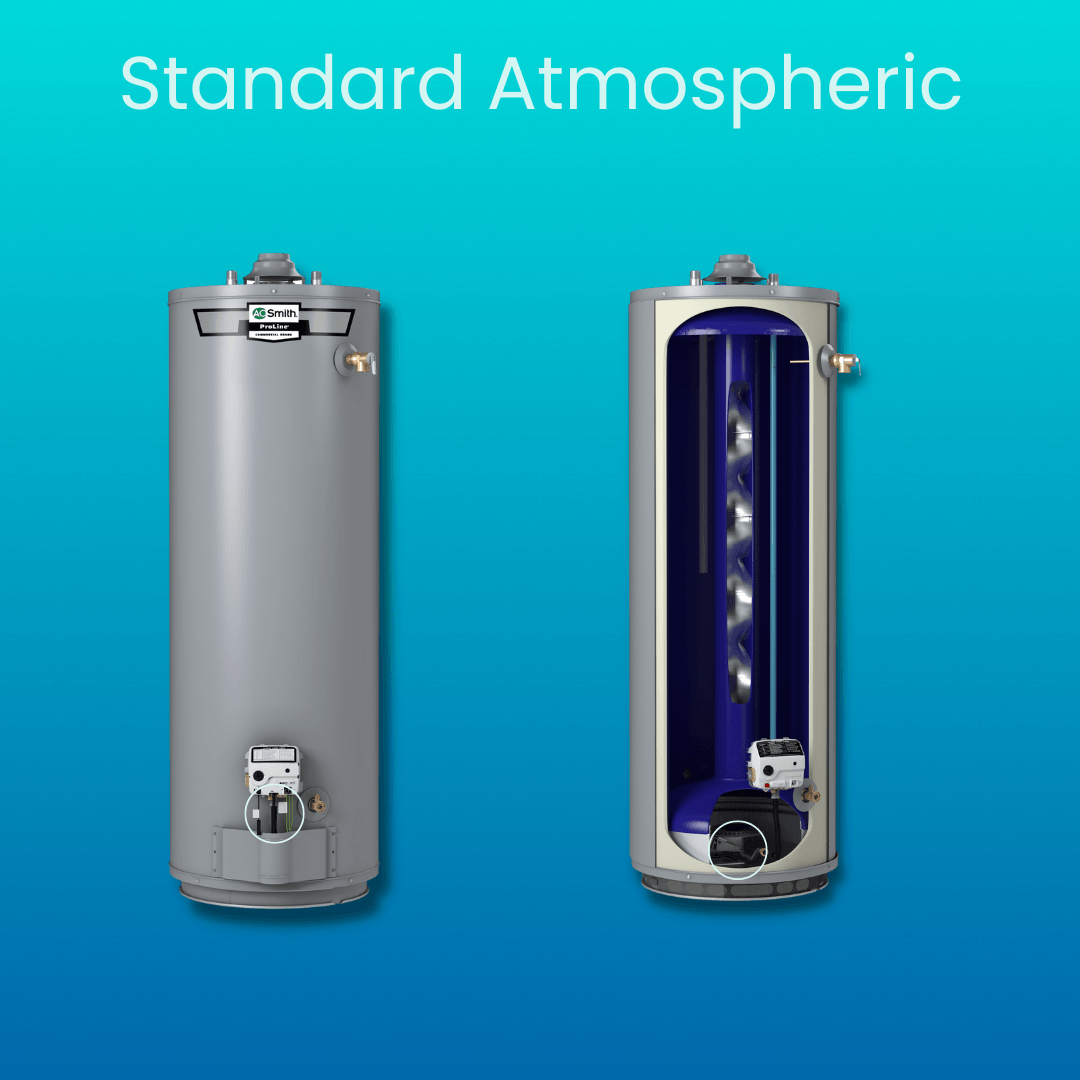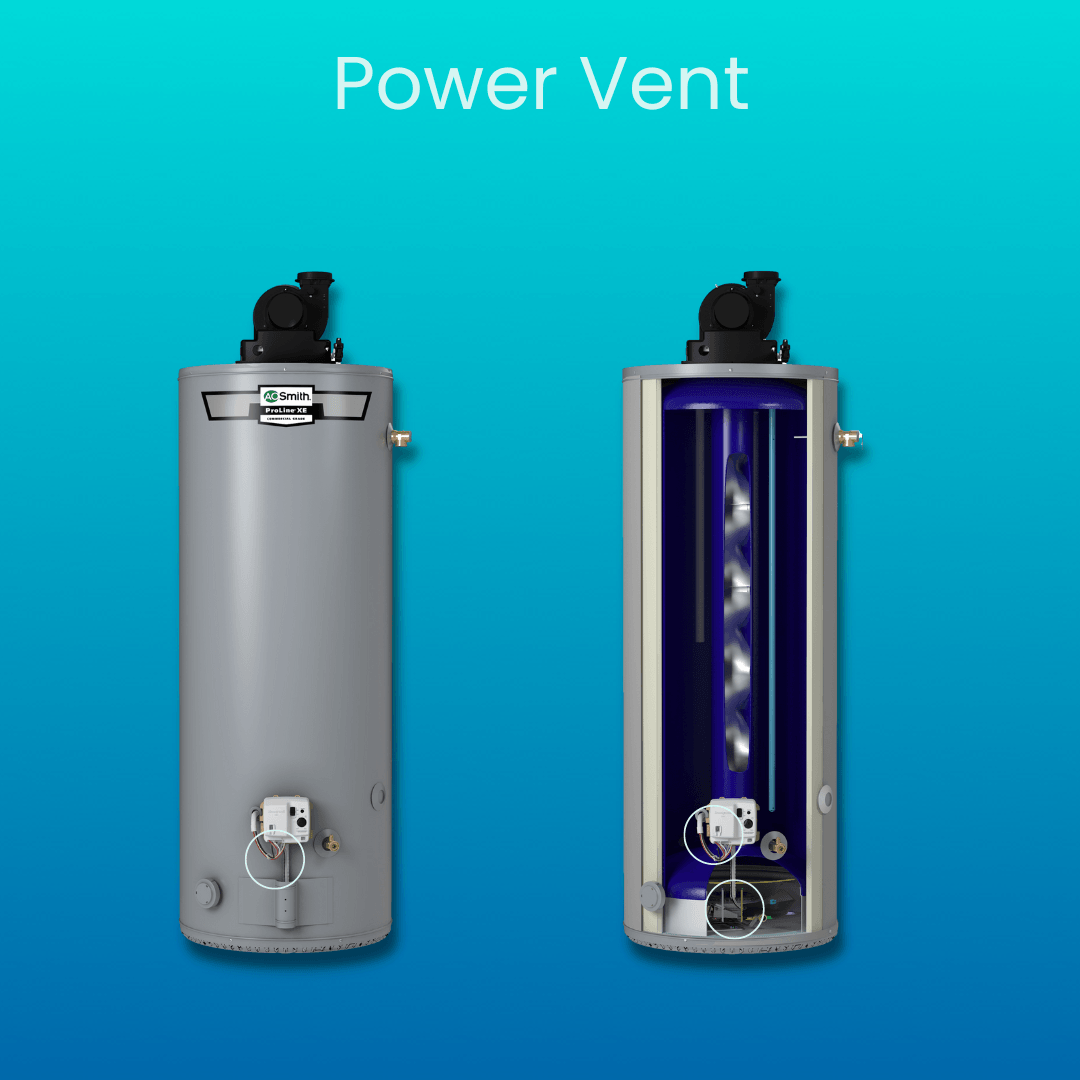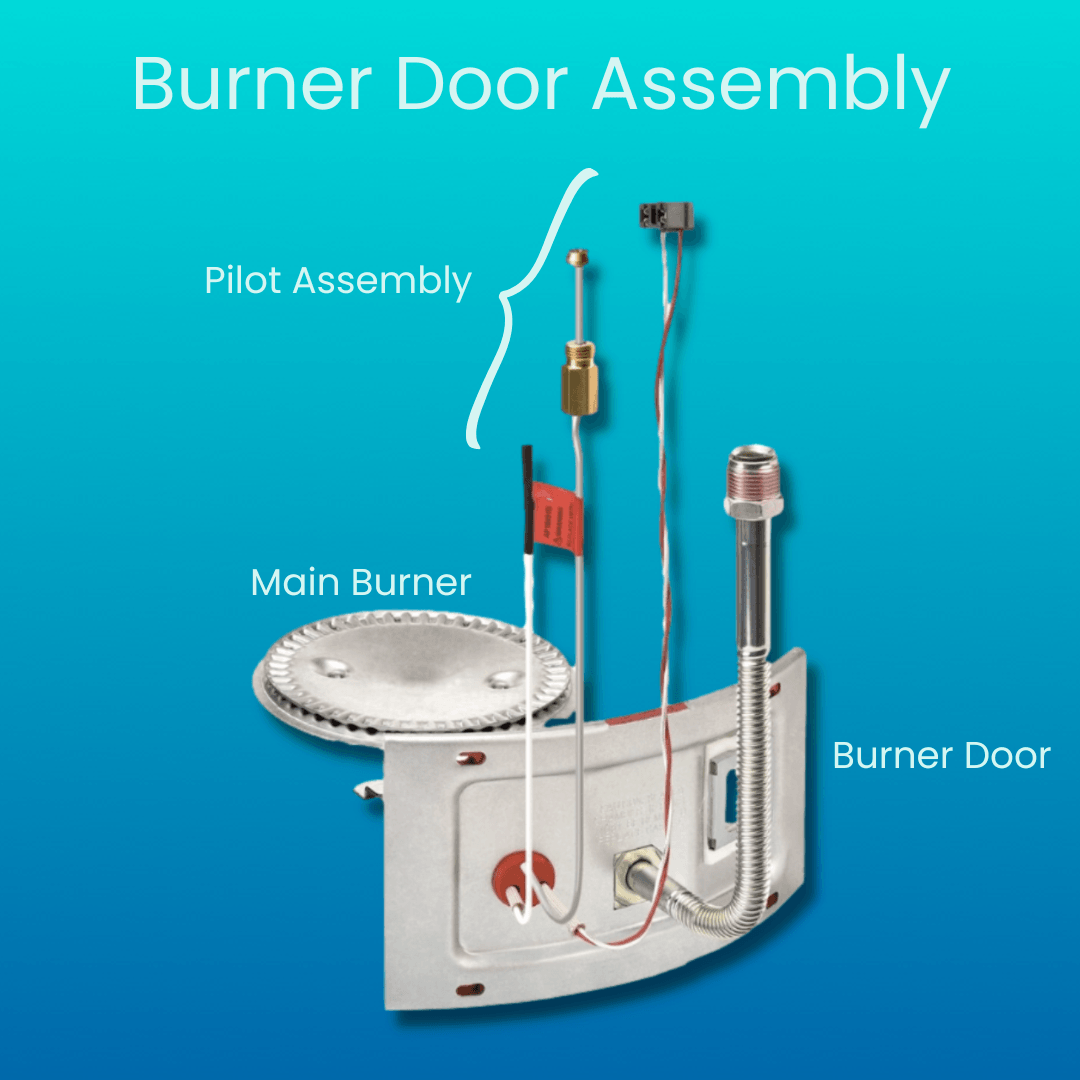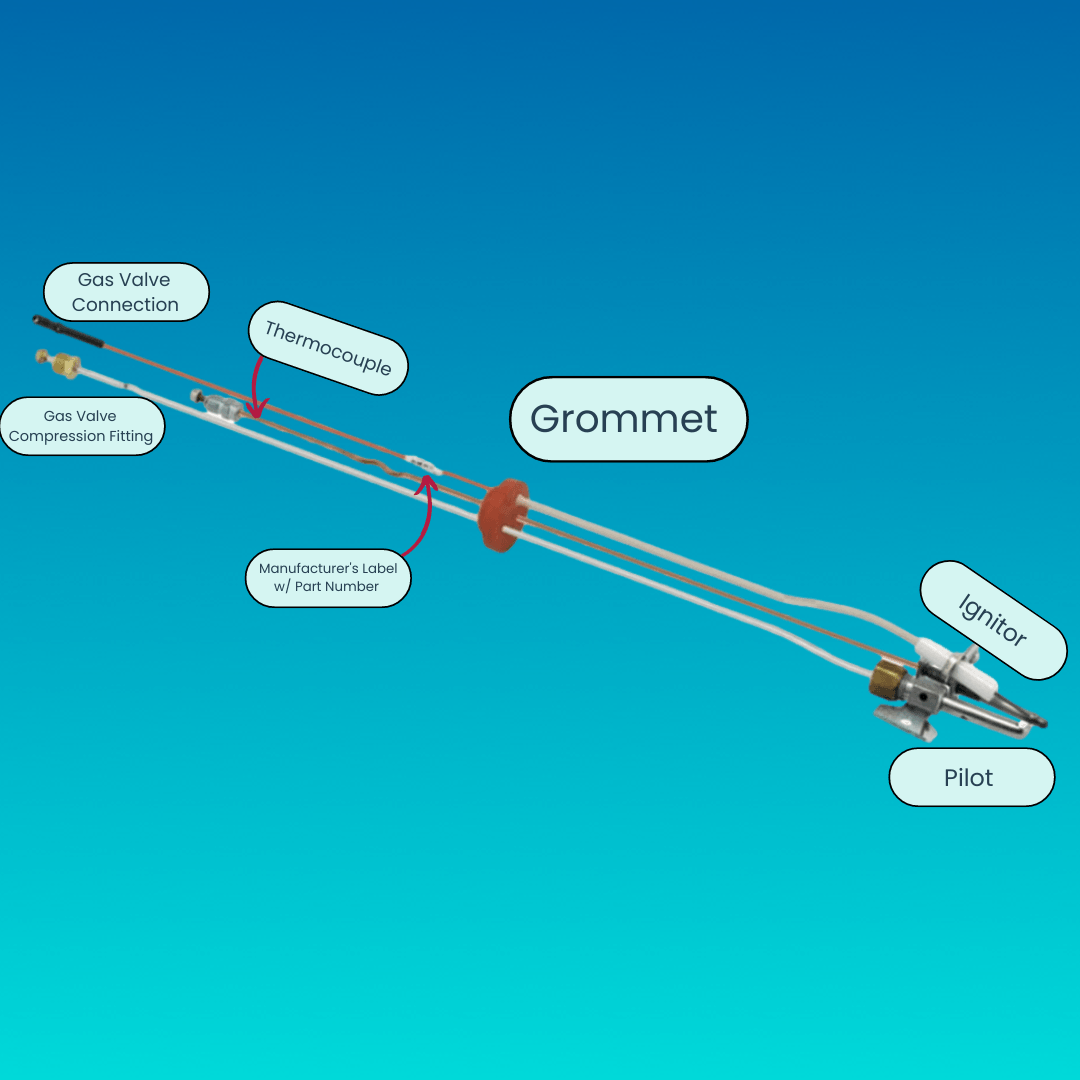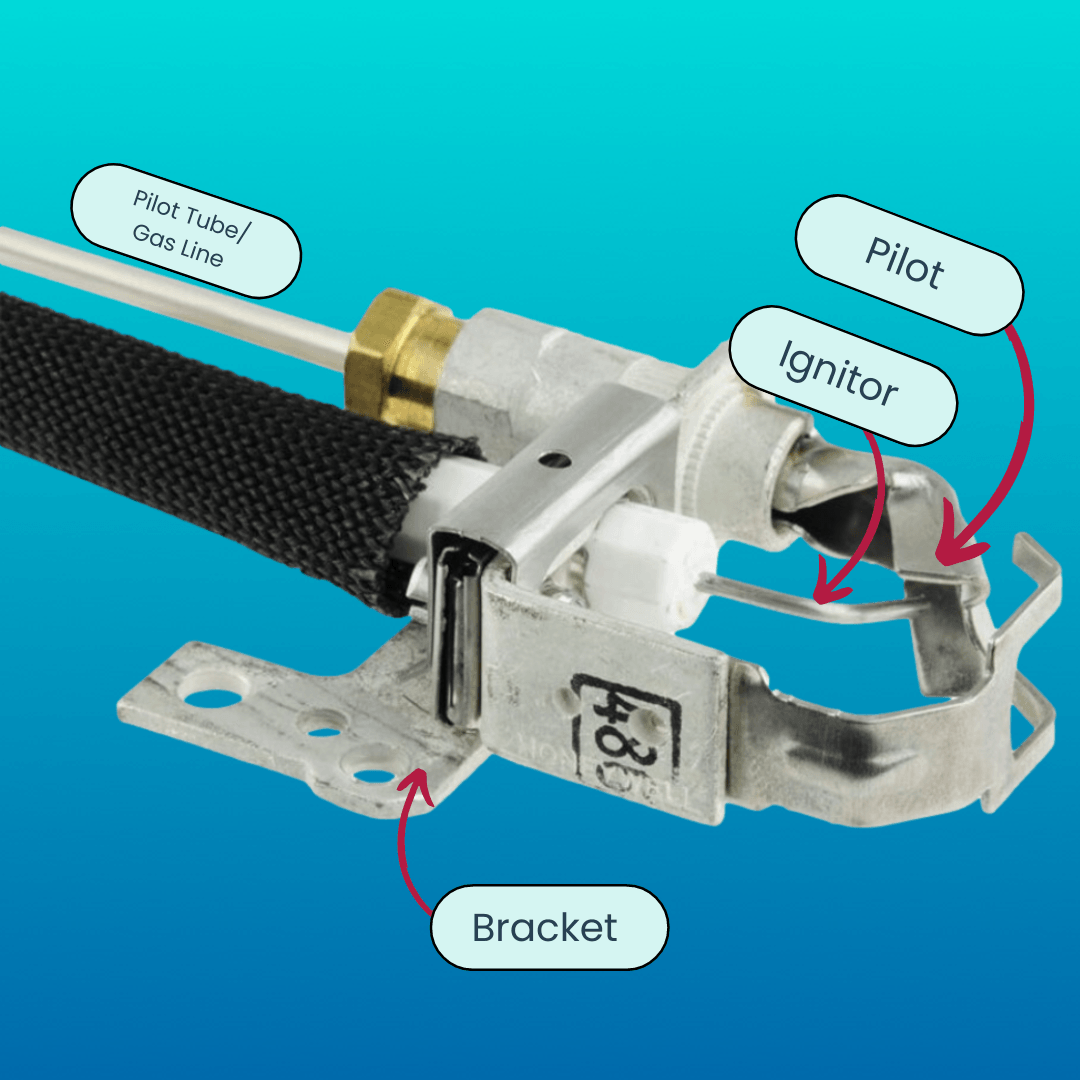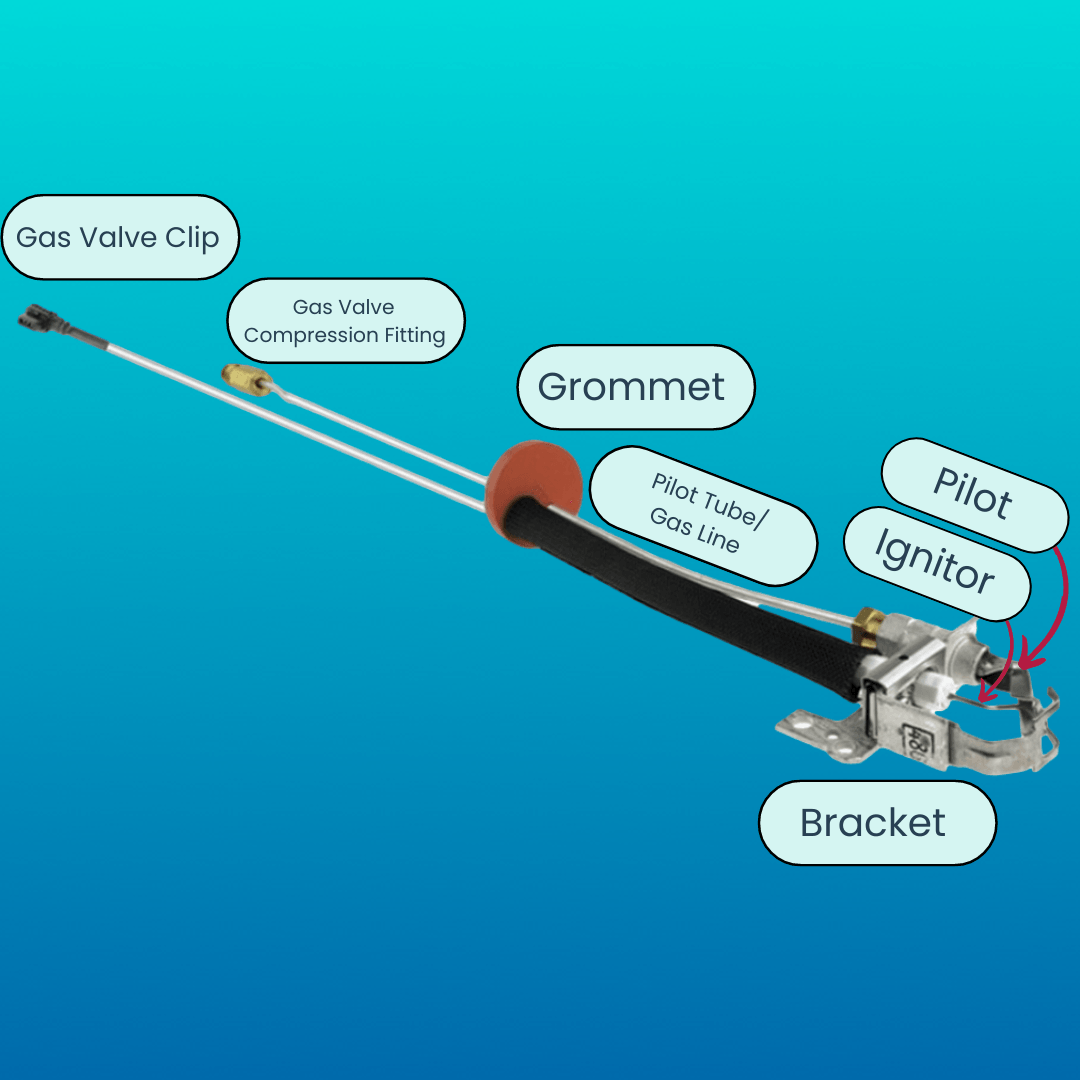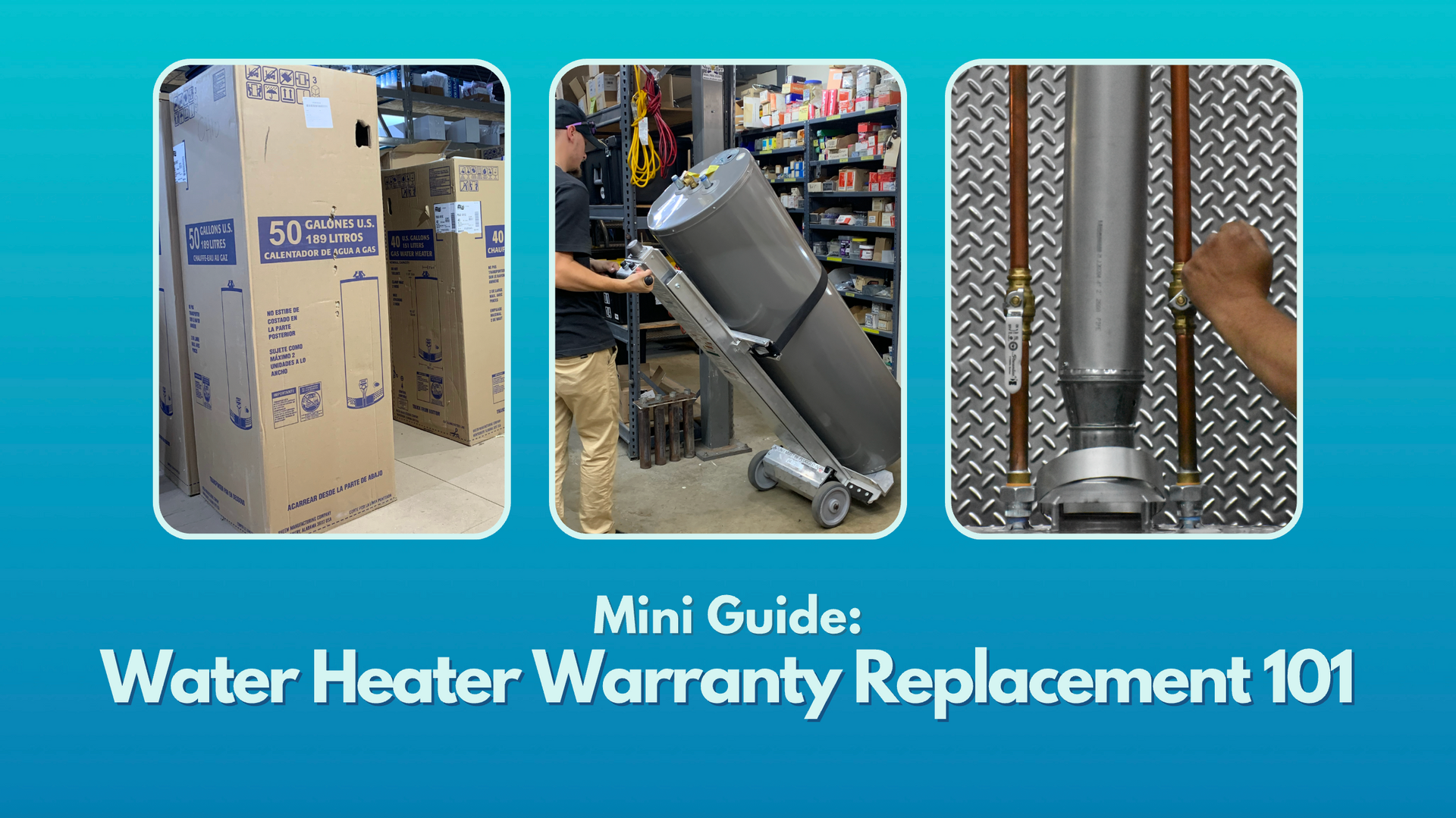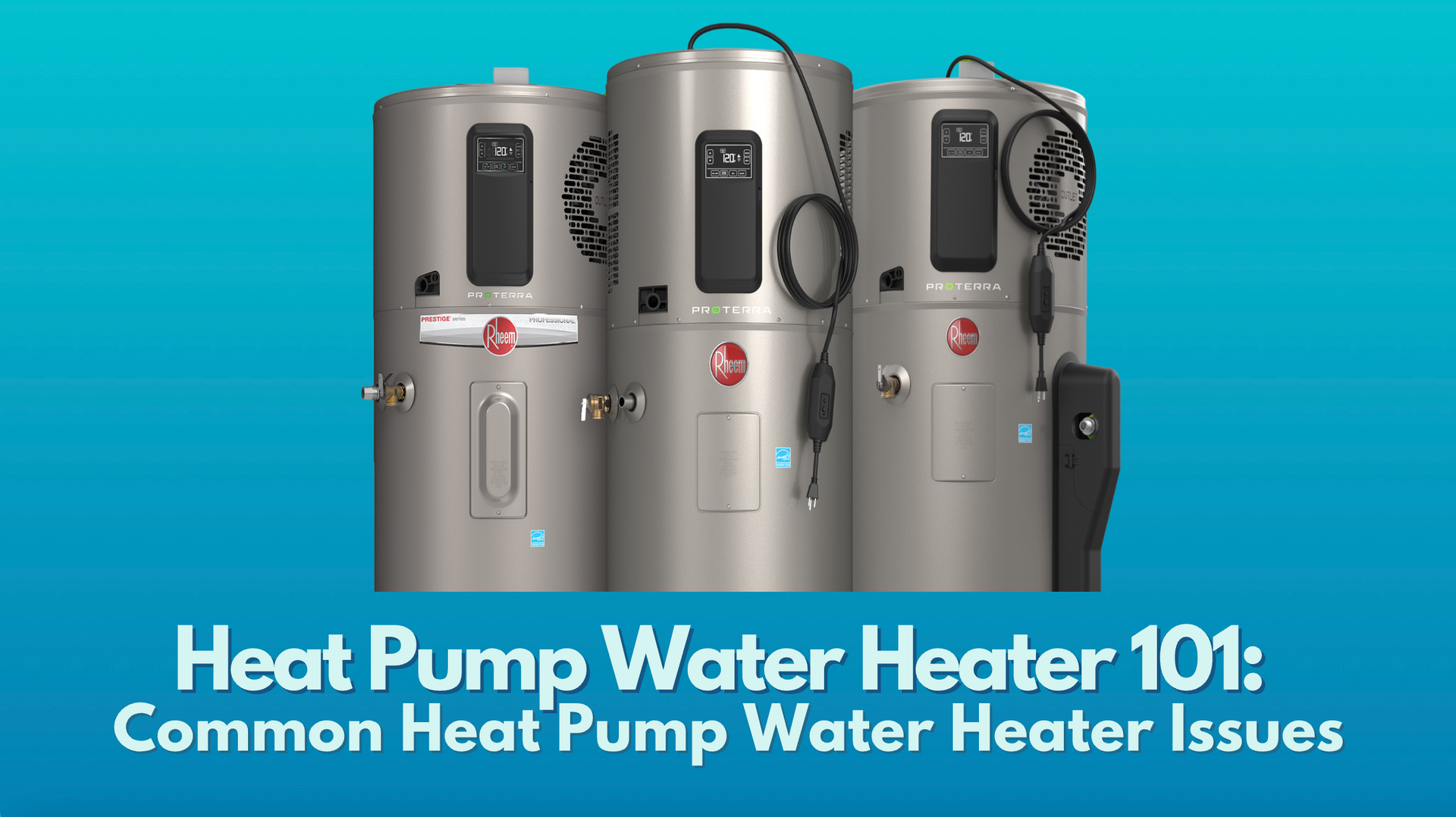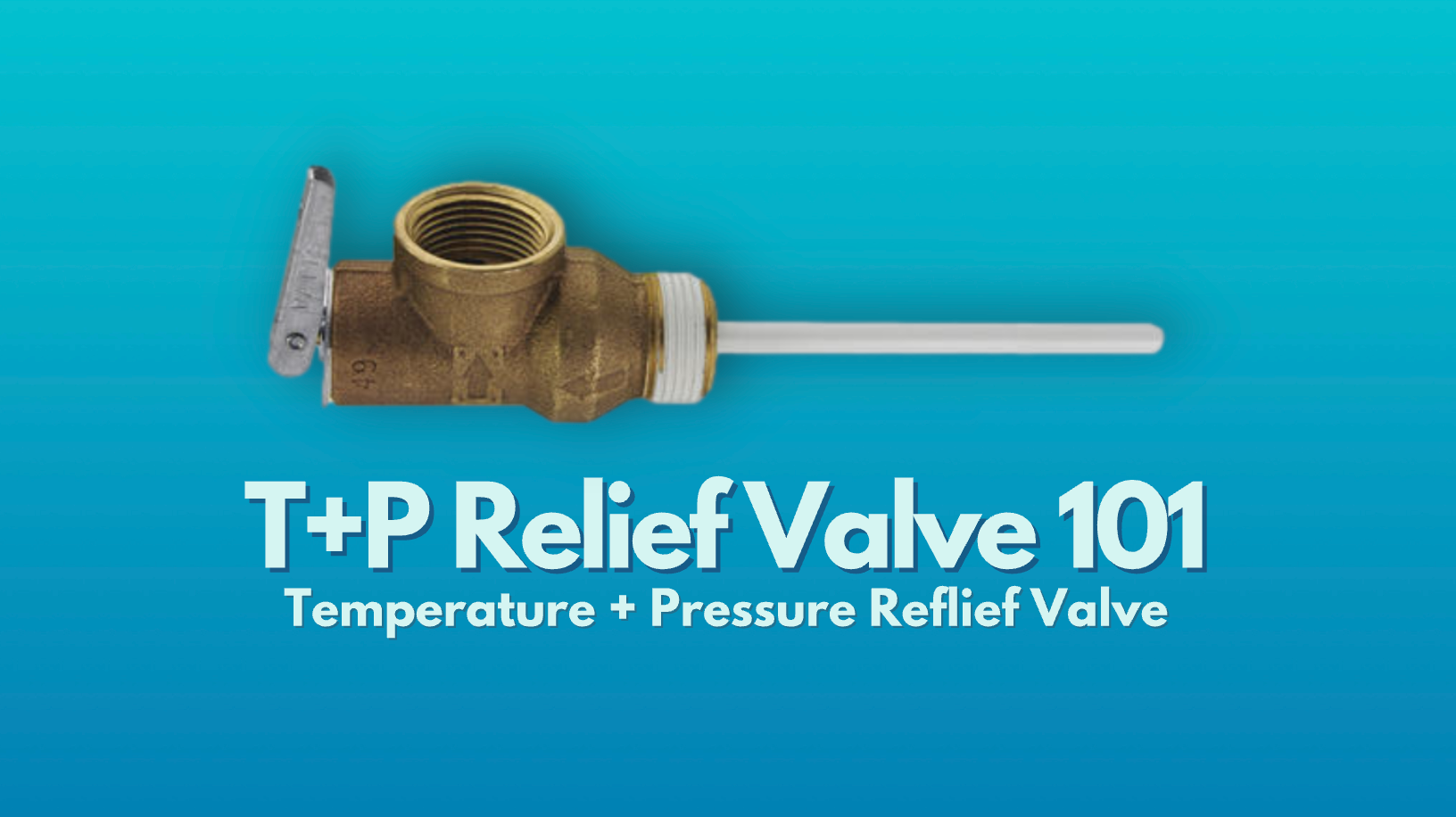Water Heater Pilot Assembly 101
Article Originally Published December 2, 2019; Last Updated March 17, 2025
***DISCLAIMER: PLEASE REFER TO YOUR MANUFACTURER’S INSTALLATION MANUAL FOR INFORMATION REGARDING YOUR SPECIFIC MODEL. IF YOU ARE ATTEMPTING TO SERVICE YOUR OWN HEATER, PLEASE DO SO WITH CAUTION. THIS ARTICLE IS MEANT TO PROVIDE AN INFORMATIVE + EDUCATIONAL SUMMARY AND DOES NOT SUPERSEDE OFFICIAL ONSITE DIAGNOSIS/REPAIRS OR INFORMATION FROM YOUR UNIT'S MANUFACTURER.***
What is a pilot assembly?
The pilot assembly can only be found on a Natural Gas water heater or a LP water heater (Liquified Petroleum water heater). It typically consists of a pilot, ignitor, and thermocouple (or a thermopile which is multiple thermocouples built into a single part).
The pilot assembly connects the burner to the gas valve and is responsible for providing the pilot flame that lights the main burner. Without a pilot flame, a gas water heater will not produce hot water.
How does a pilot assembly work?
Let's Think of a Gas Stove Top:
First, you turn the knob on the front of the stove, setting the desired flame temperature. As you turn the knob, you will hear a quick clicking sound which is usually followed by a blue flame appearing around the burner. Internally, turning the knob triggered the pilot to spark, opening up the gas line. The combination of the spark, gas, and air produces the blue flame you see; the higher the desired temperature, the more gas is initially required to reach said temperature.
Let's Apply our Gas Stove Top Idea to a Gas Water Heater:
Gas appliances are generally very similar in their sequence of operations. A gas water heater compared to a gas stove is no exception: the water heater's gas valve has a knob or dial on the front (the gas knob) which can be used to control the temperature settings, also controlling whether any gas enters the unit through the gas line. Conventional gas valve models have a separate knob which can be used to spark the pilot's ignitor. Adjusting the knob by turning it on/off or setting the temperature will communicate to the desired temperature to the gas valve's thermostat. Please note that it is
not
recommended that you change the settings from those outlined in the manufacturer’s installation manual to
reduce the risk of scalding.
When there is a demand for hot water, the gas valve's thermostat communicates with the pilot assembly. When the ignitor sparks, it ignites the pilot light, then the flame spreads to the main burner. The thermocouple or thermopile then maintains communication with the gas valve to ensure that the water heater is operating safely via electrical current. In the event that the pilot flame or pilot light goes out, the thermocouple will send a signal to close off the gas valve and gas supply because its outgoing electric current will decrease, indicating there is an issue.
Where is the pilot located?
The pilot is located near the bottom of the unit, attached to the gas valve, through the burner door assembly, and to the bottom of the main burner. You cannot see the entire pilot directly from an outside view, but you may be able to see the silver pilot tube line and copper thermocouple or thermopile leading down from the gas valve inside the burner or manifold door assembly. You can see the water heater's burner door when you remove the panel (aka the jacket door) that covers it. Upon removal, you may see a red/orange circular grommet inserted into the burner door assembly. The grommet helps affix the pilot into place as half of its lines are inside the unit and half are outside, connected to the gas valve. Beyond the components of the pilot assembly, the burner door also contains the sight glass which allows you to see the burner chamber and the flame when the water heater is in operation.
Anatomy of a Water Heater Pilot Assembly
*Click images to enlarge*
Semi-electronic pilot contains gas supply line, ignitor, and thermocouple
Electronic pilot contains gas supply line and electronic ignitor
Water Heater Pilot Assembly Descriptions
Ignitor/Igniter | The ignitor is the “rod” that ignites the gas by creating a spark at its tip
Thermocouple | The thermocouple is a copper temperature sensor which communicates with the gas valve/gas line, allowing it to remain open or closed, depending on whether the pilot is lit
Burner Bracket | A bracket which helps the installer screw the pilot into place at the bottom of the burner assembly
Compression Fitting | This is the golden piece at the end of the pilot tube which secures the line of flex tube into the gas valve; it serves as a
Grommet | The red/orange circular piece which “locks” the pilot into the manifold assembly; please note: this grommet is not available for individual purchase, you must replace the entire pilot assembly
Manufacturer’s Label | This usually contains the pilot’s part number or an alternative identifier and is crucial if your pilot is in need of replacement
What is the difference between pilots?
Depending on the age of your unit, you may have a semi-electronic or completely electronic pilot. In our labeled example photos, the first is a semi-electronic pilot assembly, with three lines: gas supply line, thermocouple, and ignitor that contains a gas valve connection. The second example is an electronic pilot, with a gas supply line and white wire with a black clip which is inserted into the gas valve. This type of pilot is completely controlled by the gas valve. The other main difference between pilots is the size; newer units tend to have an all-inclusive electronic pilot assembly. This means that the pilot assembly cannot be “parted out;” rather than only replacing the igniter or the thermocouple, the entire pilot would have to be replaced. An older water heater may have a pilot assembly whose thermocouple can be individually purchased.
What causes water heater pilot assembly failure?
Pilots and gas valves are two of the mostly commonly malfunctioning parts on a gas water heater. They can last as long as your unit, but are prone to wear and tear from daily use, especially during the winter months. Pilots with a thermocouple are subject to wear from the constant ignition of the flame, which tends to turn the thermocouple's copper color to a grey/black color (see Anatomy of a water heater section).
Additional causes of pilot failure include:
Need to purchase a replacement pilot assembly?
U.S. Water Heating solutions stocks an array of common water heater parts that are available for purchase online or in-person in Arlington Heights, IL. Our team members are happy to assist you in finding the correct pilot assembly for your water heater; please have your water heater's model and serial numbers available.
Here are some of the most common pilot assemblies we typically have in stock:
- A.O. Smith / American / Reliance / State
- 100093972 |PILOT/THERMOPILE W/TUBING, Natural Gas
- 100109295 | 9003542005 | 9003542105 |FV Pilot Assembly, 190° (NG)
- 100110271 |Pilot Burner
- 100110927 |Pilot Burner; PB-5P; 20 in
- 100110984 |Pilot Assembly w/ Tubing; WR; Natural
- 100112330 |Pilot Assembly Kit (Natural Gas)
- Bradford White
- 233-45653-03 |Honeywell LP Pilot
- 233-46988-04 |Honeywell Natural Gas Pilot 18.5/12/0.016
- 233-48077-03 |Natural Gas Pilot Assembly, 19/24 Honeywell
- 415-41323-01 | 239-41323-01 | 233-41323-01 |KIT-BAGGED PILOT NAT (PSE)(SVC)
- 415-47845-05 | 233-47845-05 |Natural Gas Pilot Assembly, 17/26 Honeywell
- Rheem / Richmond / Ruud
- AP14317C-1 |Pilot Assembly - NG
- AP14317N | Pilot Assembly - NG
- AP14698D-1 |Pilot Assembly - NG
- AP14698F-1 |Pilot Assembly - NG
- SP20824 |Pilot Assembly Replacement Kit H/W - NG
- SP21058 |Pilot Assembly
- SP21059 |UNIVERSAL PILOT HW/WR LP PILOT ASSEMBLY REPLACEMENT KIT
Don't see your pilot assembly listed here? Check out our online parts store or contact us for further assistance; please be sure to include your water heater's model and serial numbers.
Need diagnosis of a faulty pilot assembly or pilot assembly installation?
You're in the right place! Let our factory trained and certified technicians restore hot water by diagnosing your water heater's faulty pilot assembly or any other issues. We're an authorized warranty service provider for the major water heater manufacturers (e.g., Bradford White, Rheem, etc.) and our technicians carry a variety of genuine replacement parts on their company trucks, including many different pilot assemblies.
Contact us today for a quote or to schedule water heater repair service.
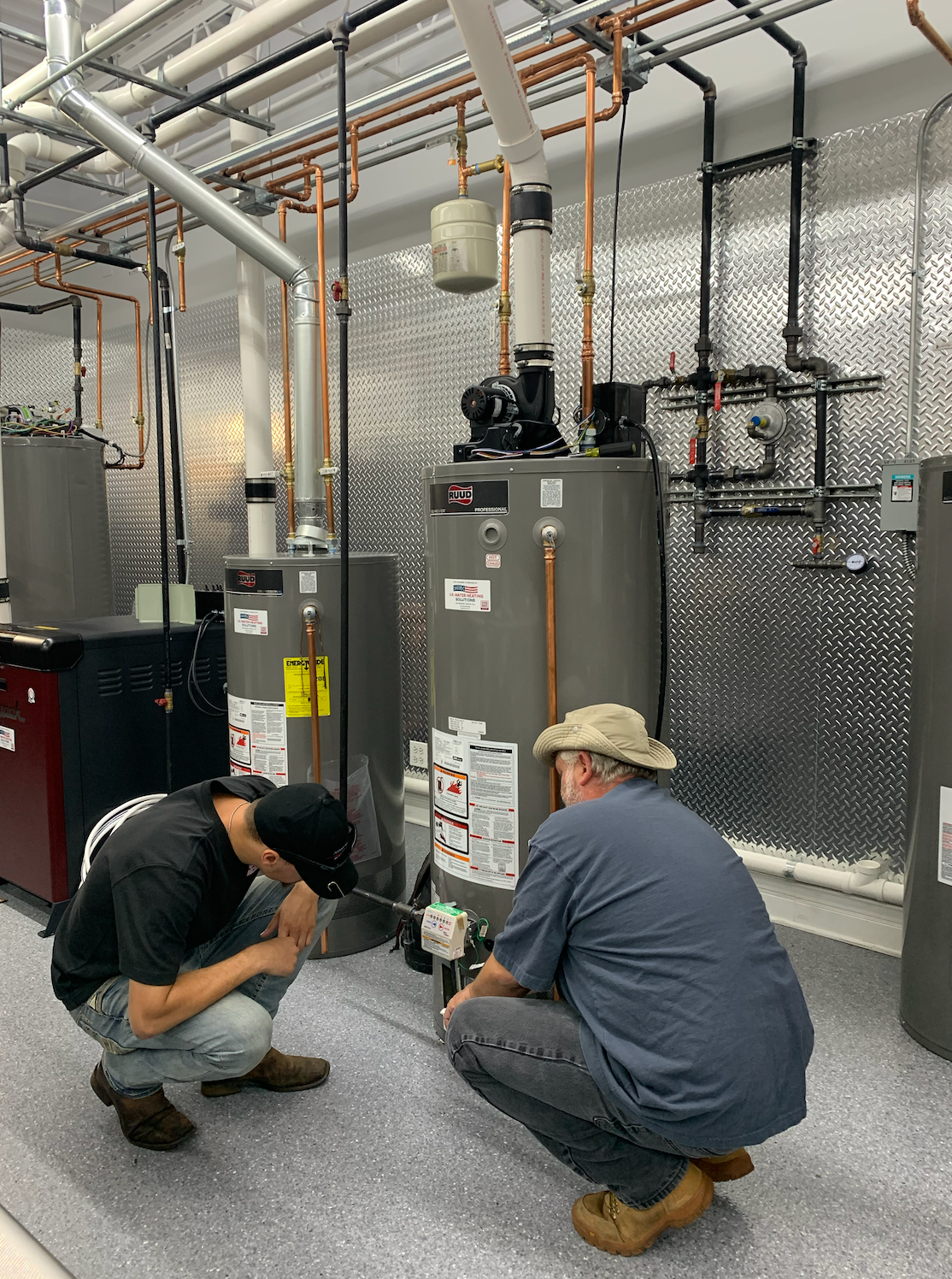
Water Heater Pilot FAQs
Need some assistance installing a new water heater pilot assembly or finding the correct water heater pilot assembly replacement part? Contact us today for more information about local water heater service!




